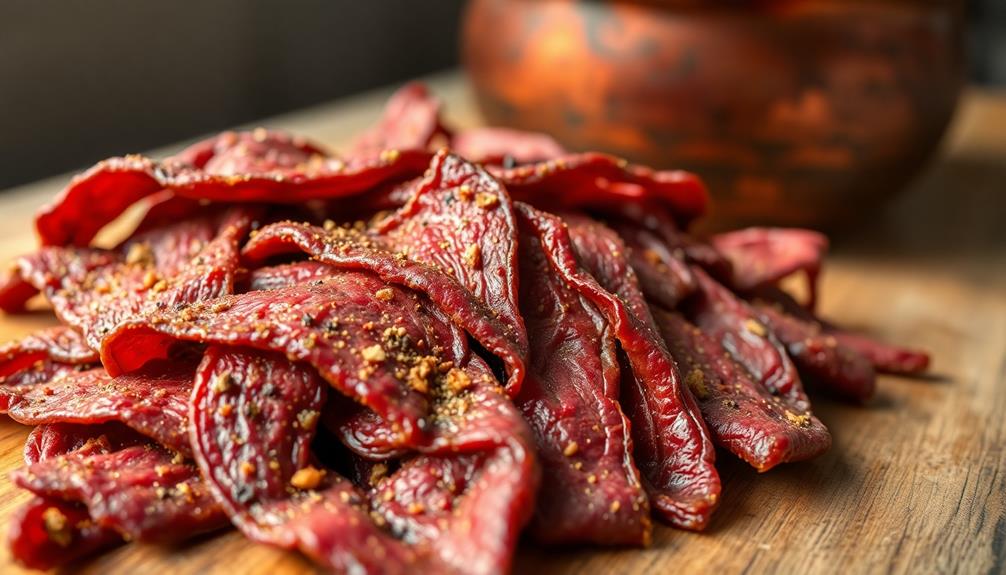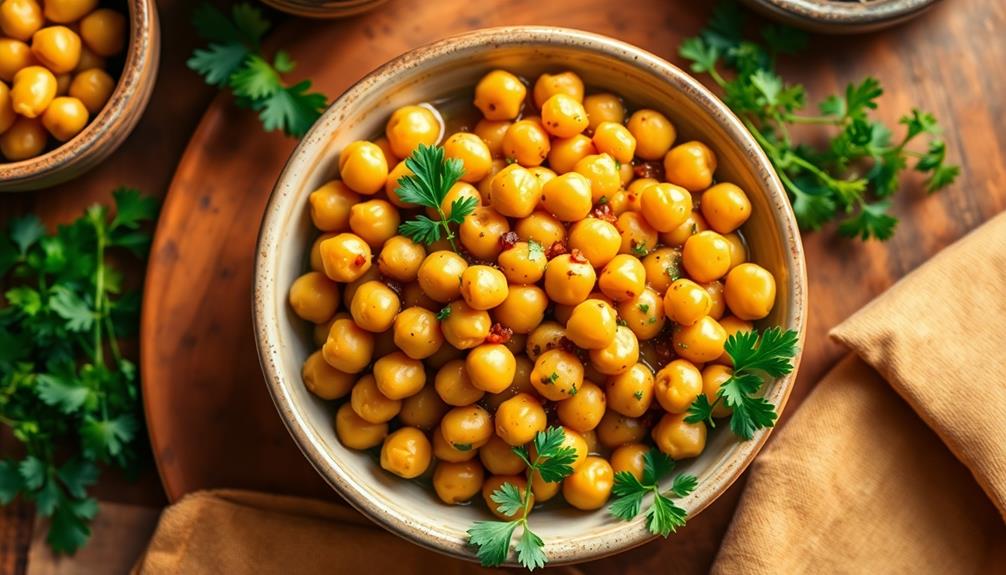Kushari, Egypt's beloved national dish, blends lentils, rice, and pasta into a mouthwatering harmony. Its origins date back to the 19th century, reflecting the country's diverse culinary influences. To prepare this tasty meal, you'll start by soaking and rinsing lentils, then cook rice and pasta to perfection. Next, you'll blend the lentils with aromatic spices and sauté them with tomatoes. Layering the components, you'll create a flavorful fusion, topping it off with crispy fried onions and a tangy dressing. This satisfying dish offers incredible textures and a delightful balance of flavors. Keep reading to discover the full step-by-step guide for crafting this Egyptian delight.
Key Takeaways
- Kushari is a beloved national dish of Egypt, combining lentils, rice, and pasta into a flavorful and filling meal.
- The origins of Kushari trace back to the 19th century, reflecting the blend of cultures and cuisines that influenced its creation.
- Proper preparation of Kushari involves thorough rinsing and soaking of lentils, as well as precise cooking of the rice and pasta components.
- The dish is often garnished with a tangy tomato sauce, crispy fried onions, and fresh herbs, creating a harmonious balance of flavors.
- Kushari is accessible for home cooks and can be prepared with straightforward instructions, making it a popular and versatile Middle Eastern dish.
History
Although the exact origins of kushari are uncertain, it's believed to have originated in Egypt as a blend of various cultures and cuisines. The dish is thought to have first appeared in the 19th century, when Egyptian cooks combined lentils, rice, and pasta to create a hearty and filling meal.
Over time, kushari has become a beloved national dish in Egypt, enjoyed by people from all walks of life. Its popularity has even spread beyond the country's borders, with versions of the dish now found in other parts of the Middle East and even around the world.
The name "kushari" is believed to have come from the Persian word "kushk," which refers to a type of rice dish. However, the exact meaning and origin of the name are still debated by food historians.
Regardless of its origins, kushari has become a beloved part of Egyptian culinary heritage, a delicious blend of flavors and textures that brings people together and celebrates the country's rich cultural diversity.
Cooking Steps
Preparing this beloved Egyptian dish is a straightforward process that allows you to craft a harmonious blend of flavors.
Start by rinsing the lentils and rice in cold water until the water runs clear. Next, bring a pot of water to a boil and cook the lentils for about 15 minutes, or until tender. Drain and set aside.
In a separate pot, cook the rice according to the package instructions. While the rice is simmering, boil the elbow macaroni until al dente. Drain both the rice and macaroni, then set them aside.
Now, it's time to assemble the dish. In a large bowl, combine the cooked lentils, rice, and macaroni. Drizzle with the tangy tomato sauce and sprinkle the crispy fried onions on top.
Finish by adding a generous amount of the zesty vinegar-based sauce. Stir everything together and enjoy this delightful and satisfying meal.
Step 1. Rinse and Soak Lentils Overnight

Start by rinsing the lentils thoroughly under cool running water. This helps remove any dirt or debris.
Once they're nice and clean, you'll want to soak the lentils overnight. Just place them in a large bowl, cover with water, and let them sit for 8-12 hours.
Soaking the lentils is important because it helps them cook faster and become more tender. It also makes them easier to digest.
When you're ready to cook, simply drain and rinse the lentils again. They'll be plump and ready to go!
This step is crucial for achieving the perfect kushari. The lentils need to be soft and creamy to balance out the other textures in the dish.
Plus, soaking them helps remove any bitterness or off-flavors. With just a little prep work, you're well on your way to an authentic and delicious kushari!
Step 2. Cook Rice and Pasta
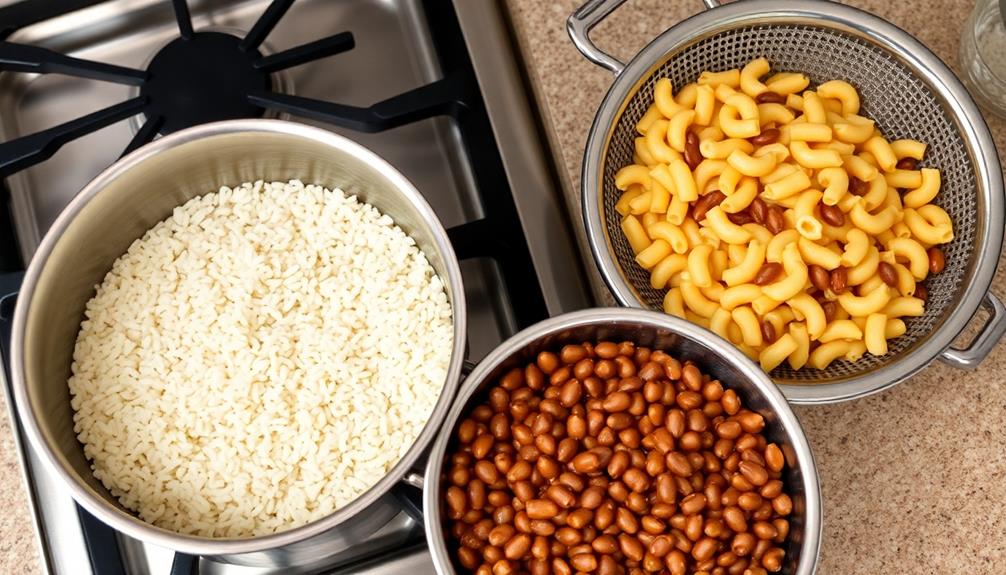
Next, you'll need to cook the rice and pasta. Start by bringing a large pot of salted water to a boil on the stove.
Once the water is boiling, add the rice and give it a stir. Let it cook for about 15 minutes, until the grains are tender. Drain the rice in a colander and set it aside.
Now, it's time for the pasta. Add the elbow macaroni to the same pot of boiling water. Cook the pasta according to the package instructions, usually around 8-10 minutes, until it's al dente.
Drain the pasta in the colander, making sure to reserve a cup of the starchy cooking water.
Fluff the cooked rice with a fork, and then transfer both the rice and pasta to a large serving bowl. Drizzle a bit of the reserved pasta water over the top to prevent the grains from sticking together.
Your rice and pasta are now ready to be combined with the lentils and other delicious Kushari ingredients!
Step 3. Prepare Tomato Sauce
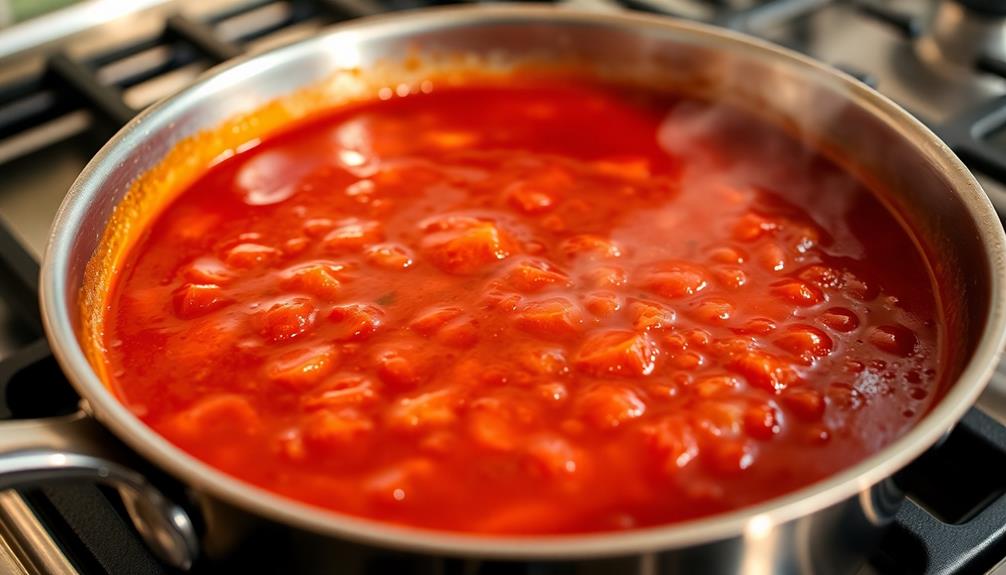
To prepare the tomato sauce, you'll need to sauté some aromatics first. In a large skillet over medium heat, add a drizzle of olive oil.
Once the oil is hot, toss in some minced garlic and diced onions. Sauté these ingredients, stirring frequently, until the onions become soft and translucent, about 5 minutes. For added flavor, consider infusing your dish with a touch of specialty tea which can enhance the overall taste experience.
Next, you'll want to add the canned diced tomatoes. Carefully pour them into the skillet, making sure to scrape up any browned bits from the bottom of the pan.
Let the sauce simmer for 15-20 minutes, allowing the flavors to meld together. Remember to give it a stir every now and then.
To finish, season the tomato sauce with a pinch of salt, a dash of pepper, and a sprinkle of dried oregano. Taste and adjust the seasoning as needed.
Your flavorful tomato sauce is now ready to be paired with the cooked rice and pasta, completing the delicious kushari dish.
Step 4. Blend Lentils, Onions, and Spices
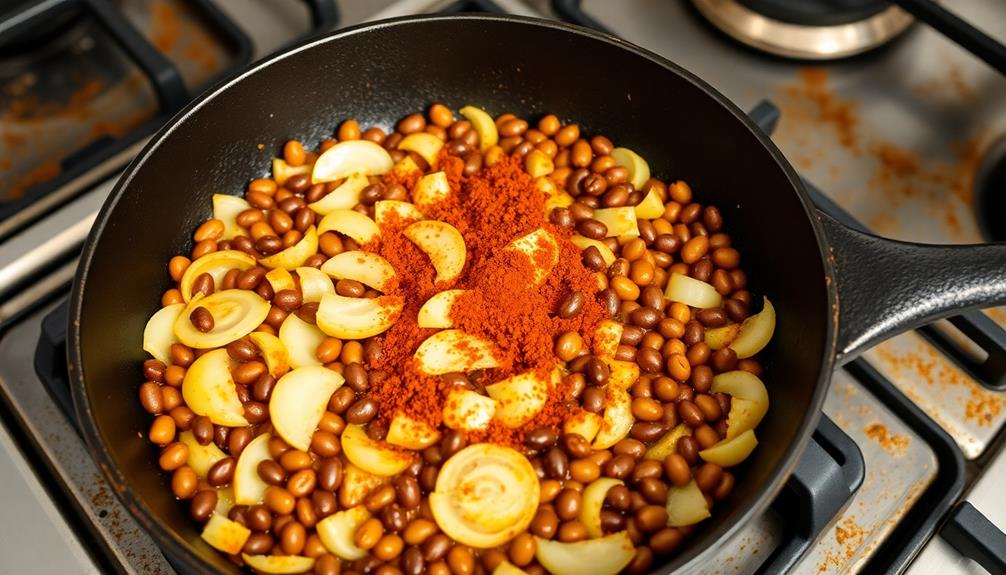
With the tomato sauce ready, you can now turn your attention to blending the lentils, onions, and spices. First, rinse the lentils under cold water until the water runs clear. This helps remove any impurities.
Next, in a food processor or blender, combine the lentils, onions, garlic, cumin, coriander, and a pinch of salt. Blend everything together until you have a smooth, creamy mixture. This blend will serve as the foundation for the kushari dish, providing a flavorful base.
Once the lentil mixture is ready, you can start assembling the rest of the kushari. In a large pot, combine the blended lentils, cooked rice, and pasta. Stir everything together until well incorporated.
Now, you can add the prepared tomato sauce and mix it in thoroughly. The lentils, rice, and pasta will soak up all the delicious flavors, creating a harmonious and satisfying dish. With these key components prepped, you're one step closer to enjoying the authentic taste of kushari.
Step 5. Assemble and Garnish Kushari
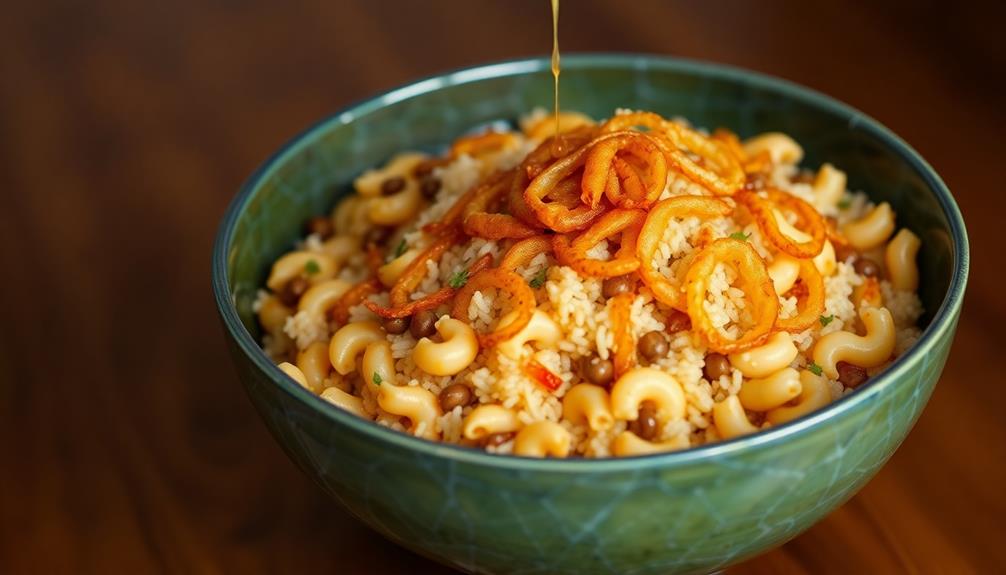
Now that you have the lentil mixture and tomato sauce ready, it's time to assemble the kushari. First, grab a large serving bowl and layer the cooked rice, macaroni, and lentils, creating a colorful and flavorful base. Drizzle the tangy tomato sauce over the top, letting it seep down into the layers.
Next, it's time to add the crunchy garnishes. Sprinkle the fried onions over the dish, followed by a generous pinch of the aromatic cumin and coriander mixture.
Don't forget the fresh parsley or cilantro – its bright, herbaceous notes will really bring the flavors together. Finally, a squeeze of fresh lemon juice will brighten the whole dish and balance the richness.
Now, step back and admire your masterpiece! The layers of textures and flavors in this traditional Egyptian dish are simply irresistible. Go ahead, take a big bite and savor the comforting, satisfying taste of kushari.
Final Thoughts
Ultimately, what're your thoughts on this delicious Kushari recipe?
After walking through the preparation, you're likely amazed by the incredible flavors and textures this dish offers. The combination of rice, lentils, and pasta creates a hearty, filling meal that's perfect for lunch or dinner.
And don't forget the tangy tomato sauce, garlic vinegar, and crunchy fried onions – they really take Kushari to the next level!
Despite the long list of ingredients, the instructions are straightforward, making this recipe accessible for cooks of all skill levels.
The hands-on time is relatively quick, too, so you can have this flavorful Middle Eastern delight on the table in no time.
Whether you're drawn to the vibrant colors, the comforting flavors, or the satisfying textures, this Kushari dish is sure to become a new family favorite.
Frequently Asked Questions
What Is the Origin of Kushari?
You know, Kushari is a delicious dish that has a really interesting history!
It's believed to have originated in Egypt, where it's been a beloved part of the local cuisine for centuries. The exact origins are a little unclear, but it's thought to have been influenced by the diverse cultures and flavors that have come together in Egypt over the years.
Isn't that cool? This tasty dish is a true reflection of the country's rich culinary heritage.
Is Kushari a Traditional Egyptian Dish?
Yes, kushari is a traditional Egyptian dish!
This delicious combination of lentils, rice, and pasta has been a beloved part of Egyptian cuisine for generations.
Originating in the bustling streets of Cairo, kushari is a hearty, flavorful meal that's become a staple across the country.
The dish is made with a combination of rice, macaroni, lentils, and chickpeas, topped with a tangy tomato sauce and crispy fried onions. It’s typically served with a side of street bread, which is a simple and delicious addition to the meal. The street bread recipe calls for just a few basic ingredients, but the key is in the technique of stretching and cooking the dough to achieve a light, fluffy texture. Together, kushari and street bread make for a filling and satisfying meal that’s beloved by locals and visitors alike.
Whether you're enjoying it at a local restaurant or whipping it up in your own kitchen, kushari is a true taste of Egyptian culture.
Get ready to dive into this tasty, time-honored dish!
What Are the Main Ingredients in Kushari?
The main ingredients in kushari are lentils, rice, and pasta. These tasty elements come together to create a delightful dish that's beloved in Egypt.
You'll find tender lentils, fluffy rice, and chewy pasta all mixed up in a savory tomato sauce. It's a comforting and satisfying meal that's sure to leave your taste buds dancing.
With its unique blend of flavors and textures, it's no wonder kushari has become a classic Egyptian favorite.
How Long Does It Take to Prepare Kushari?
Preparing a delicious homemade meal can take some time, but it's well worth the effort!
When it comes to Kushari, you'll need about an hour and a half to complete the whole process.
Don't worry, though – it's mostly hands-off time, so you can relax while the different components simmer and cook.
With a little bit of planning, you'll have a hearty, flavorful dish that's sure to impress your family and friends.
Can Kushari Be Made Vegetarian or Vegan?
Absolutely! Kushari can definitely be made vegetarian or vegan.
In fact, it's a super versatile dish that's perfect for meatless diets. You can easily swap out the traditional meat ingredients for delicious plant-based alternatives like tofu, chickpeas, or even mushrooms.
The great thing is, you won't miss the meat at all – the dish is packed with flavor from the savory spices and tantalizing textures.
Give it a try, and you'll see how tasty and satisfying a vegetarian or vegan kushari can be!



